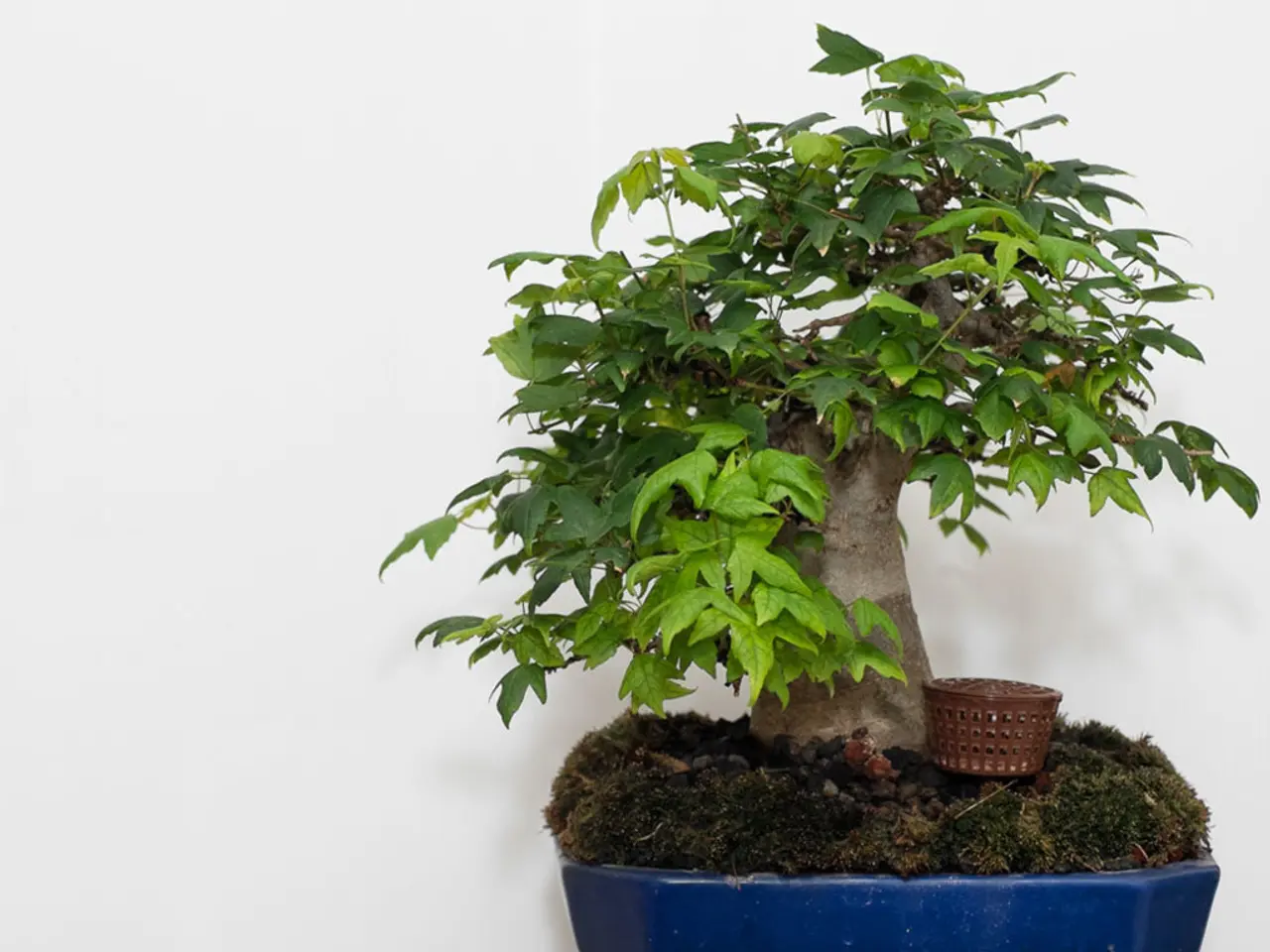Techniques for Joining Bonsai Species and Introducing Aesthetic Elements
Advanced Bonsai Grafting Techniques Unleash a World of Creative Possibilities
Bonsai grafting, a centuries-old art form, has evolved significantly in recent years, with artists pushing the boundaries of traditional techniques to create visually stunning and unique bonsai compositions. Advanced grafting methods offer a myriad of creative possibilities, allowing bonsai enthusiasts to combine desirable traits, create specific visual effects, and overcome natural growth limitations [1][3][5].
At the heart of these techniques lies the art of joining parts of different plants. Known as grafting, this process involves carefully attaching a scion (a branch or shoot) from one plant onto the rootstock or trunk of another, so they grow together as one. There are several grafting techniques, each with its unique advantages and applications.
Approach Grafting is a method that joins two stems or branches, which remain connected to their own root systems until the graft heals. This technique is useful for thickening trunks or adding branches in desired locations.
Thread Grafting, often used with species that graft easily to themselves like willow leaf ficus, involves inserting a scion into a small incision and securing it with fine thread or wire until it fuses [5].
The creative benefits of these advanced grafting techniques are manifold. Artists can combine different species or varieties to introduce contrasting leaf sizes, colors, or textures, enhancing visual complexity. They can add branches or "feeder branches" in exact positions where natural growth is insufficient. Building more naturalistic trunk shapes by adding thickness through grafted segments or joining multiple trunks is another advantage. Lastly, creating multi-trunk or group plant styles by welding separate plants into one cohesive design is a testament to the power of these techniques [1][3][5].
These methods not only allow artists to manipulate tree form far beyond pruning and wiring but also enable the creation of sculptures with intentional, dynamic aesthetics that would be difficult or impossible to achieve through conventional bonsai techniques alone. Mastering these advanced grafting techniques requires perseverance, as even experienced artists encounter setbacks like incompatibility between scion and rootstock, poor cambium layer alignment, and inadequate aftercare.
To achieve success in Bonsai grafting, it's crucial to select compatible species, maintain ideal humidity and temperature, monitor for pests and disease, and provide adequate aftercare. The ideal temperature for grafting bonsai trees is a range of 65°F to 75°F (18°C to 24°C). The recovery time for a grafted bonsai varies, but can take anywhere from 6-24 months.
Innovative Bonsai artists are venturing into uncharted territories, creating avant-garde designs that defy traditional conventions through unconventional species combinations and innovative techniques. By embracing these advanced grafting techniques, the world of bonsai continues to evolve, offering endless opportunities for artistic expression and exploration.
References: [1] Advanced Bonsai Techniques: Grafting and Layering. (n.d.). Retrieved March 20, 2023, from https://www.bonsaiempire.com/blog/advanced-bonsai-techniques-grafting-and-layering
[3] Bonsai Grafting Techniques. (n.d.). Retrieved March 20, 2023, from https://www.bonsaiforum.net/content/bonsai-grafting-techniques
[5] Thread Grafting. (n.d.). Retrieved March 20, 2023, from https://www.bonsaiempire.com/blog/thread-grafting
In the realm of bonsai, advanced grafting techniques broaden the scope of artistic expression by enabling the combination of different species or varieties, resulting in striking contrasting leaf sizes, colors, or textures [1][3][5]. Moreover, these methods allow for the creation of unique home-and-garden designs, as one can add branches or "feeder branches" in precise locations or build more naturalistic home-and-garden styles through grafted segments [1][3][5].




